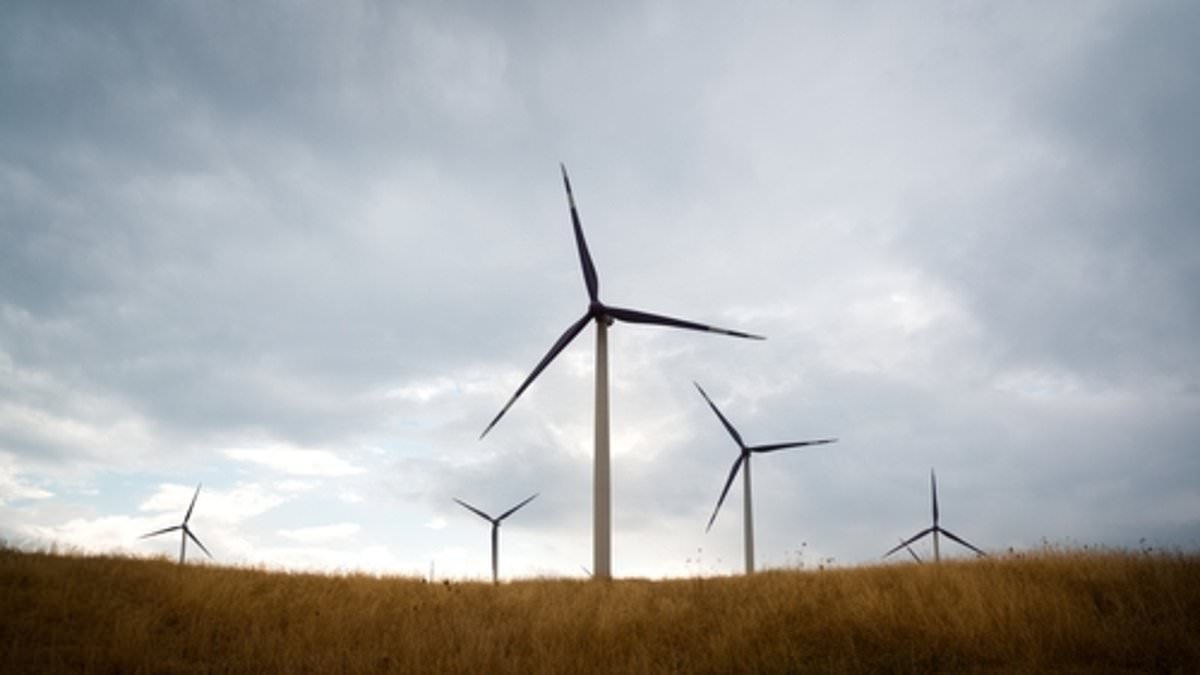Copyright dailymail

A few weeks ago, my colleague sat down with the team at Foresight Environmental Infrastructure to get under the skin of how one of the sector’s more established players is coping with a difficult backdrop. Barely a day after that piece was published, John Scott, the outgoing chair of Bluefield Solar Income Fund, used his final annual meeting to issue something of a rallying cry; a pointed reminder that all is not well in the world of listed renewables. Scott’s comments struck a nerve. The sector he helped steer through a decade of cheap money and buoyant valuations now finds itself in a very different environment. His warning that ‘business as usual’ is no longer an option could just as easily apply to dozens of renewable investment funds across the London market. The appeal of the sector used to be obvious: stable, inflation-linked cash flows from essential infrastructure, underpinned by government policy and long-term energy demand. For years, those characteristics gave investors the comfort of predictable dividends and low volatility. But over the past three years, that promise has been tested. Inflation, interest rate rises, and market shocks have transformed the economics of environmental investment. When risk-free government bonds offer 4 or 5 per cent, the appeal of a renewable energy fund yielding 6 per cent narrows quickly (though of course that yield has jumped to double digits... but you get the idea). The jump in gilt yields since 2022, driven first by the energy price shock from the war in Ukraine and then by sticky inflation, forced up discount rates across the board. The impact has been brutal for many investment trusts. Infrastructure valuations fell, net asset values slipped, and investor sentiment soured. Shares that once traded comfortably above book value are now languishing at discounts of 25 per cent to 35 per cent. It has not been a single blow but a rolling series of headwinds. Power prices, which soared in the immediate aftermath of Ukraine, have since normalised. That has eroded revenue forecasts and prompted a reappraisal of assumptions that underpinned years of growth. The Electricity Generator Levy, shifting biomass support schemes and evolving planning rules have added a layer of policy uncertainty that the market could do without. Few things chill investor appetite faster than a government tinkering with the rules midstream. Meanwhile, the operational picture has been mixed. Storage and flexibility assets, once billed as the next growth story, have endured their own swings. Ancillary service revenues have declined as new capacity has flooded the market. Battery storage funds have seen income volatility and, in some cases, dividend suspensions. It has left investors questioning whether the glossy growth projections of 2021 and 2022 were realistic. Capital markets, too, have turned from friend to foe. The model of raising cheap equity to fund new projects no longer works when shares trade on steep discounts. Debt costs have risen sharply, squeezing returns and forcing boards to think defensively. Issuance has dried up, and some trusts have turned instead to selective asset sales or buybacks to close discounts. Others, like Bluefield, are exploring structural reform. Scott’s suggestion that Bluefield could merge with its investment manager, Bluefield Partners, and operate as a vertically integrated independent power producer is a sign of where the wider sector might be heading. For years, most listed funds were externally managed vehicles, light on staff, reliant on advisers, and designed to collect income from operating assets rather than build or trade them. Integration promises more control and potentially better alignment with investors, but it comes with new risks. Running development pipelines and balancing capital allocation decisions inside one entity is far more complex than managing a portfolio of existing sites. Still, Scott’s comments reflect a broader reality: the old model of perpetual issuance and predictable yield no longer fits today’s market. The sector is being forced to evolve, structurally, operationally, and financially. For some trusts, that will mean internalising management. For others, it will mean merging or repositioning as broader energy transition vehicles. Either way, the goal is the same: to become less dependent on fickle market conditions and more self-sustaining. For investors, this presents both a challenge and an opportunity. The current sell-off has left valuations at levels that may overstate the risks. Yields of 9 per cent or 10 per cent on portfolios of tangible, essential assets look enticing when compared with government debt, particularly as inflation begins to ease and interest rates appear to have passed their peak. If bond yields start to fall, discount rates may follow, lifting valuations and narrowing the wide share price gaps that have dogged the sector since 2022. Some boards have already started to respond. Buybacks, fee revisions and dividend recalibrations are becoming more common. Greencoat UK Wind, for example, now charges fees on the lower of market capitalisation or net asset value, a practical gesture towards investor alignment that others may have to emulate. Across the sector, governance is coming under greater scrutiny, with shareholders pressing for cost transparency, performance-linked fees and clearer capital allocation policies. Consolidation may also prove to be a catalyst. The listed renewables space is crowded with mid-sized vehicles, each bearing its own administrative costs and market discount. Combining management platforms and operating portfolios could produce economies of scale, stronger balance sheets and a broader mix of technologies.



